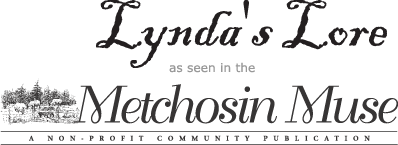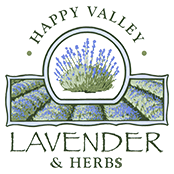|

April 2011
Green Thumbs UP!
Starting Spring in your garden ...
This is it! That magical Spring garden fever seeding window ~ now!
Here are as many simple success tips as I can cram into my word quota … Go grab those seed package and come along for the ride. Man, or woman, can not live on Lavender alone so this article is 99% vegetable matter …
“April 1st no fooling” … is my slogan for the average home gardener and novices to begin growing, especially “inside”. Yes, you can start earlier, though more due care and attention is required and I don’t want you to burn out before the outside weather supports direct seeding or transplanting. Budget allowing: do invest in a small heating cable mat and/or a matching grow light tube for inside starts. Hydroponic shops sell these, I’m sure Dwight at Integrity Sales has some varieties, ditto for Lee Valley. An outside cold frame is also adequate with a minimum/maximum thermometer to help guide you with your temperature range and is great for hardening off your precious starts ...
Light, temperature and moisture are your gods and nemesis’s! Allowing for minor micro climates; the reasoning behind Victoria’s frost free ritual planting date of May 24th for direct seeding, is to give you an almost effortless germination success. When you have light, temperature and moisture all lined up like an eclipse: the seeds jump out of their packages and thrive!
Personally I find banking on planting your whole garden on one little date of May 24th seems overwhelming and takes the joy out of all your possible little successes along the way. Gardening is billed as “therapeutic” … Please don’t add it to your “Must Do” list as one more stress of possible unattainable expectations to manage! Your garden will not be perfect … 27 years later on my current little garden plot: mine is not perfect either. Isn’t that a relief … I am still learning.
Please start your seeding projects with a bale of soil-less sterile potting mix. Integrity Sales does offer certified organic brands. Save your rich compost and all your other yummy additives for your “teenage” babies … too much nutrients when seedlings just emerge can kill them. So can over-watering. Begin with a light touch, all your seeds are little “space babies” with their own nutrient package packed along for the initial germination ride. They simply need a cozy, soft, dampish “bed” to entice them to wake up … When they develop their second set of “true leaves” is the timing to fuss if you must.
I prefer seedling trays with inserts that divide the area into 4’s or deeper 6’s. This allows you to space the seeds easier and not crowd the developing babies. Multi packs also take up less space inside with a tray usually holding 24+ squares ... They are also helpful at transplant time to slip each baby in its own cube of soil, not disturbing the developing fragile new root system.
The general rule for seeding looks at each seed’s size. The smaller the seed, the less soil cover: the bigger the seed, the deeper the soil cover. Basil is an example of a small seed: Pumpkin is an example of a big seed. Hopefully your seed packages are from a reliable company that prints lots of information and help on each specific envelope. There are a few seeds, like German Chamomile that don’t need any soil cover at all because of their size…if you sneeze: they are gone! There are also a few varieties, like Dill that need direct light to sprout and no soil cover despite their size … Your seed package should give you a heads up on these individual requirements.
Any fertilizing should not begin until at least the four leaf stage. This is the time all those look-alike first roundish green leaves unfold a second set of identifier leaves, or “true leaves”, that start to take on their adult characteristics and possible identification to the practised eye. “Weekly weakly” is the fertilizing motto, liquid feed is the easiest from prepared commercial brands or diluted homemade manure brews. Over fertilization rots the young seedling’s neck or at the very least in cold damp conditions creates a killing slime on the soil surface … Room temperature water also stops temperature shock.
Your bare fingers are still the best “tool” to check the soil’s moisture needs around the seedlings. Do not be afraid that the surface looks & feels dry, yet a little deeper you can feel dampness. This also helps the new roots dig a little deeper for water. After a while, you will also be able to tell from the weight of the pots/containers alone.
Do remember to “harden off” your babies before shocking them with the real world outside. This entails you using a cold frame as a protected in-between zone or a sheet of floating light weight white woven “Remay” cover to help them acclimatize to cooler outside temperatures and strong breezes. A warm rainy day is ideal, delay if the temperatures are closer to freezing. I have no idea of weather patterns this year as I write in late February with a foot of snow outside … I too am practising that other garden skill called … Patience.
When you transplant these babies into your garden plot, pots or box beds: that is where you want your soil fat and sassy ready to receive those precious starts. You can pre-fertilize these areas with a granulated fertilizer worked in even a couple of weeks ahead of transplanting for the nutrients to break down and be available on a cellular form for your hungry transplanted babies.
More guidelines; just like we have favourite foods, so do vegetable starts. Potatoes, really easy big “seeds” ... They like acid soils and manure free … their spot this year needs the least fuss. Good drainage allows you to direct plant when their spot is on the dry side in early spring and just before your last frost date. The Brassica family; Broccoli, Cauliflower, Kale, and Brussels sprouts need a “sweet” soil…You can therefore pre-amend their area with wood ashes or dolomite lime. (Footnote: I have Club Foot in my soil, a root disease affecting all Brassicas. To remedy this condition: I additionally place a full cup of dolomite lime under each young plant as I transplant into their chosen spot.) You can see how inter-planting Potatoes and Broccoli would be a recipe for failure: their needs opposite to each other. If you are a novice, do look up each vegetable as you go for guidelines for success. West Coast Seed catalogues are a free wealth of information for anybody’s seeds and their individual needs! Steve Solomon’s book, “Growing Vegetables West of the Cascades” is still available to help us to succeed on the coast from his trial gardens in Oregon. He began Territorial Seeds ~ a precursor to West Coast Seeds here.
Back to that magical date of April first “no fooling” …
Here is a list to “play” with for your seeds inside and out:
Inside start; Broccoli, Cabbage, Cauliflower & Mr. Tomato
Outside start; Arugula, Borage, Celery greens, Chard, Chinese greens, Dill, Florence fennel, Kale, Leeks, Lettuce, Onions, Parsley, Parsnip, Radish, Shallots & Spinach
April 15th inside: all your Summer & Winter Squash
Mid April outside directly; Beets, Carrots … more Peas
Mid May inside; Basil, a pinch of seed to a pot plus Cucumber & Nasturtiums
Late May … Honestly for the fuss, I recommend buying Pepper, Melon and Eggplant starts now. Ditto for Artichokes and Asparagus: because they take so long to mature from seed.
… Though you can start Corn inside now; 4 seeds to a pot, this keeps the birds from stealing the soft sprouts before they are deeply rooted when direct seeded and emerging outside. Transplant outside in about 10 days time, left in a clump as they are after all a grass … this also ensures great cob pollination!
June 1st ... Direct sow Beans, Squash and Mr Basil. Sweet Basil will pop up in three days if the night temperature is plus 10 C. One year I tried sowing Basil every ten days & by the end of July; they were all at the same stage. I do recommend covering your Basil enriched growing area with a woven black fabric and planting in cut holes about 9” apart in any direction. This keeps the starts warmer but still allows air and water through. Don’t separate your Basil seedlings either if you start transplants … You can always add a direct seeded row now in another spot in your garden if Summer means Basil to you and you want lots to freeze some as well.
Have I forgotten any of your favourite veggies?
A quick note about your Herb starts; buy baby Chive, Lovage, Oregano, Rosemary, Sage and Thyme starts as these are all perennials and take time to mature for harvesting frequently. Start the quick annuals from seed like Arugula, Calendula, Coriander/Cilantro, Dill, Sweet Marjoram and Summer Savory. French Tarragon & good Mints are propagated from cuttings not seeds to keep their flavour.
Do not be tricked by cheaper “Russian” Tarragon plants: it tastes like Pepper … You want that anise “bite of the dragon” taste that true Tarragon was named for, so that your 101 Zucchinis will taste divine! There is such a thing as too much success in the Zucchini department; 3 plants are plenty for a family …
Well keep those warm and tasty thoughts of gardening going and with a bit of luck the sun will return soon and stay! And with my not-so-secret tips I hope you jump into successful growing now!
… As for those “Green Thumbs”; they only get greener as you garden and learn …
I expect mine to glow in the dark by the time I am 80!
Lynda
Originally published in the April 2011 edition of the Metchosin Muse
Printable Version 
|

